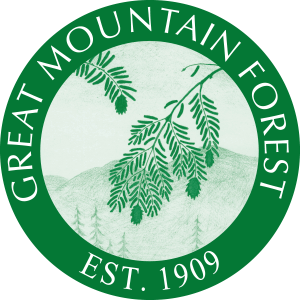Historic October Snowfall
By Russell Russ
The wild and crazy weather patterns are getting wilder and crazier. Following two months of way above normal rainfall and above normal temperatures, in came October with record breaking snowfall. No temperature or total precipitation records were set this month, but the old record for October snowfall was absolutely shattered. With many maples dropping their leaves early and heavy snow in late October it almost seemed like we had the year without a fall. For the people that say there are never any bad foliage years this year might have proven them wrong.
The month’s high temperature of 73 degrees was observed on October 10 and the low temperature of 23 degrees was observed on October 31. The average mean temperature was 49.1 degrees, 1.5 degrees above normal. With one light frost in September and three light frosts in October there were just four frosts before the first snow fell.
The total precipitation for the month was 6.58 inches, 2.30 inches above normal. Through October this year, the total precipitation amount was 68.95 inches. For the first ten months of the year we were an amazing 25.63 inches above normal. After ten months we were 16.40 inches over our normal entire yearly average amount of 52.55 inches. The year of 2011, through October, is already the fourth wettest year in the last 80 years. Norfolk’s record amount of total precipitation for a year was from 1955 when 76.04 inches were recorded. Total precipitation includes rain and frozen precipitation. Snow and sleet is melted down to liquid and that amount is added to the total precipitation amount.
This year it seems like every month has some sort of big weather event. This month’s big event was the record breaking snowfall. To put things in perspective, here are some snowfall statistics for October. Observations have been recorded here for 80 years. The number of years when October has measured at least 2 inches of snow is thirteen, at least 3 inches of snow is four, and over 10 inches of snow is only one. The 80 year average for October is just 0.6 inches.
This month a total snowfall of 23.8 inches was recorded. There were 2.5 inches from the October 27 snow and then 21.3 inches from the October 29-30 storm. Our old October snowfall record of 9.5 inches from the October 4, 1987 storm was more than doubled. Unlike many other towns, our snow was just a bit lighter which spared us from the heavy tree damage that took place in numerous areas across the state. Due to downed trees, branches and power lines, mostly not in Norfolk, the power was knocked out for two to four days for most people in Norfolk and its surrounding towns. It was definitely an October that will be remembered for many years to come.
Update for the month of October:
Record breaking snowfall for October! This October shattered records for snowfall. Snow fell on two occasions this month. A snowfall amount of 2.5” was measured after the October 27th event and a snowfall amount of 21.3” was measured after the October 29th-30th event. Snow measurement was extremely difficult, but believe me, many different measurements were taken to come up with the official totals. The big storm began around noontime Saturday, October 29th and ended at approximately 4 am on Sunday, October 30th. The old record for most snow in an October storm and for the October monthly total was 9.5” from the October 4, 1987 event. We also recorded 6.8” from a storm on October 10, 1979, the other big snowy October for Norfolk.
So, the snowstorm total of 21.3” is the new record and the monthly snowfall total of 23.8” is the new monthly record for October. Our records go back 80 years.
2011 continues its quest to become the wettest year in our 80 year history here at the weather station. With October’s 6.58” of total precipitation the yearly total is now 68.95”. Currently the 4th wettest year on record, with two whole months to go. If we get just the average amount of precipitation in November and December we will beat the old record of 76.04” (1955) by over two inches. The total precipitation figure includes rain, sleet and snow. The snow or sleet is melted and then measured and that liquid amount goes towards the total precipitation amount.

